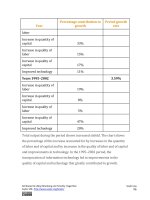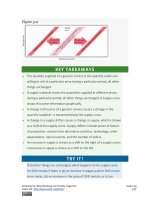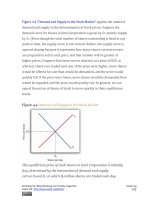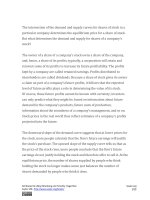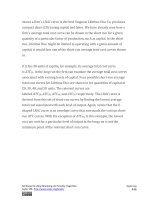Authors libby rittenberg 852
Bạn đang xem bản rút gọn của tài liệu. Xem và tải ngay bản đầy đủ của tài liệu tại đây (384.5 KB, 1 trang )
TRY IT!
According to what basic principle did the U.S. Supreme Court find
Eastman Kodak not guilty of violating antitrust laws? According to
what basic principle did the Court block the merger of Brown Shoe
Company and one of its competitors, United Shoe Machinery? Do you
agree or disagree with the Court’s choices?
Case in Point: Does Antitrust Policy Help
Consumers
The Department of Justice and the Federal Trade Commission spend a
great deal of money enforcing U.S. antitrust laws. Firms defending
themselves may spend even more.
The government’s first successful use of the Sherman Act came in its action
against Standard Oil in 1911. The final decree broke Standard into 38
independent companies. Did the breakup make consumers better off?
In 1899, Standard controlled 88% of the market for refined oil products.
But, by 1911, its share of the market had fallen to 64%. New discoveries of
oil had sent gasoline prices down in the years before the ruling. After the
ruling, gasoline prices began rising. It does not appear that the
government’s first major victory in an antitrust case had a positive impact
on consumers.
In general, antitrust cases charging monopolization take so long to be
resolved that, by the time a decree is issued, market conditions are likely
to have changed in a way that makes the entire effort seem somewhat
frivolous. For example, the government charged IBM with monopolization
in 1966. That case was finally dropped in 1982 when the market had
changed so much that the original premise of the case was no longer valid.
Attributed to Libby Rittenberg and Timothy Tregarthen
Saylor URL: />
Saylor.org
852
